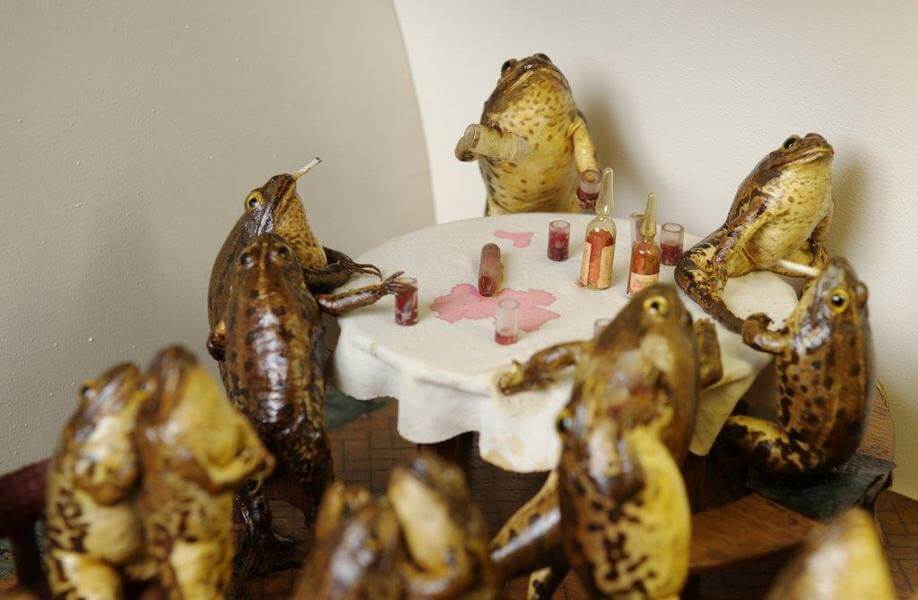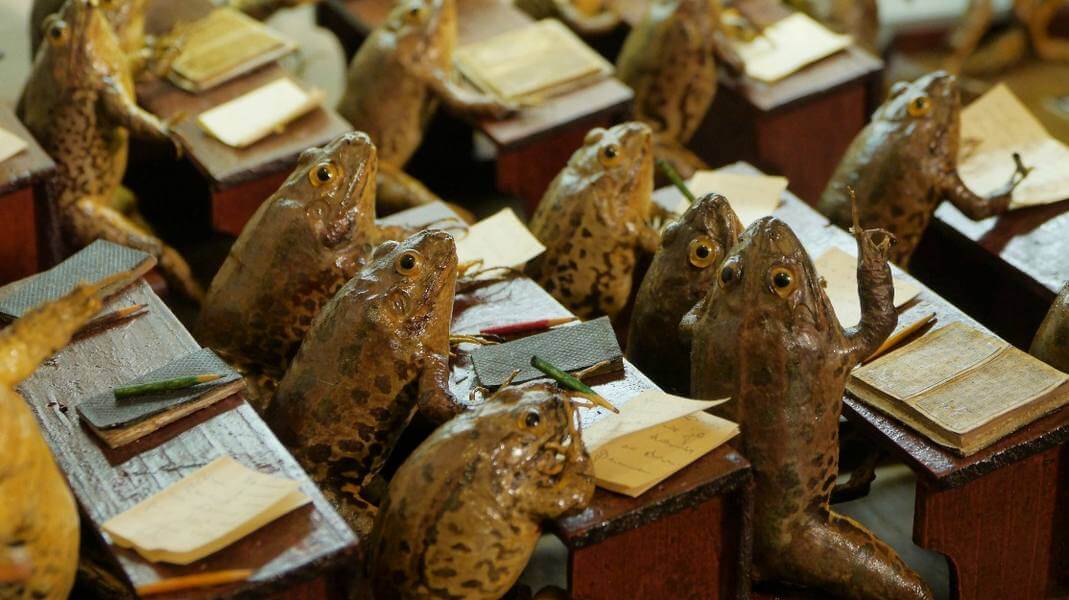My daily commute to work is a sacred time of reflection, an opportunity for me to walk through urbanized areas before the rest of the world has gotten out of bed. I often find myself, during this time, staring up at the towering apartments and office spaces and I imagine what will occur behind those window panes today: a 9:00am office meeting, a student Zooming into class, a family gathering for breakfast – these small everyday details that seem to get drowned out in the larger shouts of political turmoil, climate change, and social injustices.
Ferenc Mere shared this interest in everyday life. An incredibly skilled taxidermist in the 19th and 20th centuries, Ferenc Mere was most famous for “Froggyland”, a museum featuring Mere’s 507 stuffed frogs displayed in everyday situations – human situations, that is. Mere spent an entire decade collecting and stuffing Rana esculenta, the common European frog also known as the “edible frog”, but his decision to create exhibits based on human life using these frogs did not come until much later at the start of the 20th century when taxidermy became increasingly popular. These exhibits feature displays ranging from a frog dinner party (complete with frogs smoking cigarettes around the table) to a school group of frogs taking notes behind a desk.


Though Froggyland is based in Split, Croatia, the mobile museum has gained international recognition, boasting more visitors than the nearby “Game of Thrones” museum. Ivan Medvesek, the owner of Froggyland, hopes to get his circus of frog people to the U.S. and says that it is mostly the Americans and British who love Froggyland. Is American emphasis on work and careers the underlying root of our fascination with Froggyland? Mere’s introspective look at human lives seems to suggest this, almost turning our daily routines and habits into a caricature through his frogs. This subliminal messaging is intriguing, but not without its controversy. Many have chastised Froggyland and Mere himself for his display of animal cruelty, others uncomfortable with the use of dead frogs to mirror human life. Despite the reactions, Froggyland is consistent in its ability to leave visitors discussing Mere’s work and reflecting on their own humanity well beyond their visit. For me, Froggyland is a comfort – a way to compartmentalize trivial, everyday habits. In the face of larger, global problems, Froggyland is a strange and unique sanctuary that offers this comfort and space for self-reflection.

To learn more about Froggyland, visit their website here: https://froggyland.net/
Leave a Reply